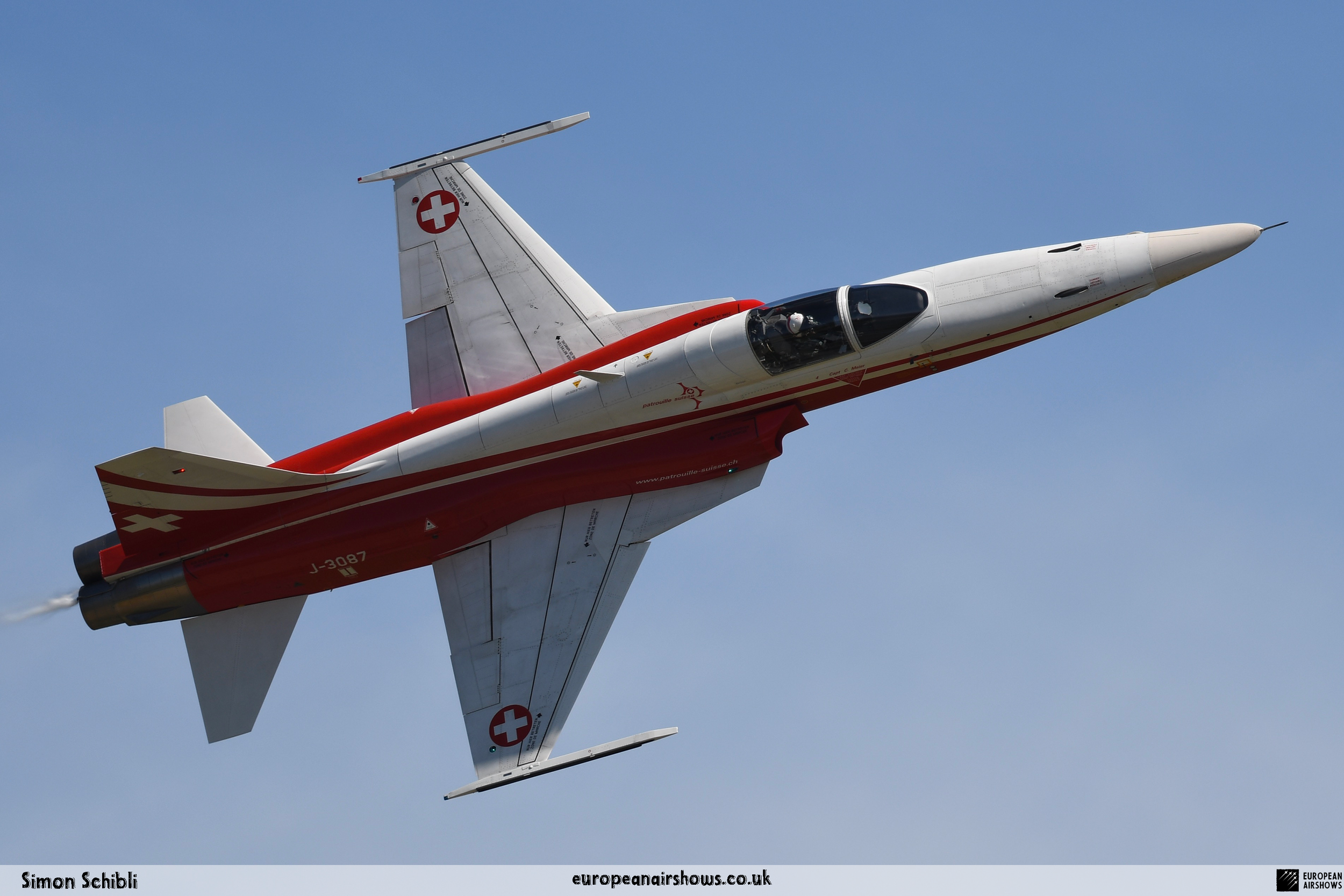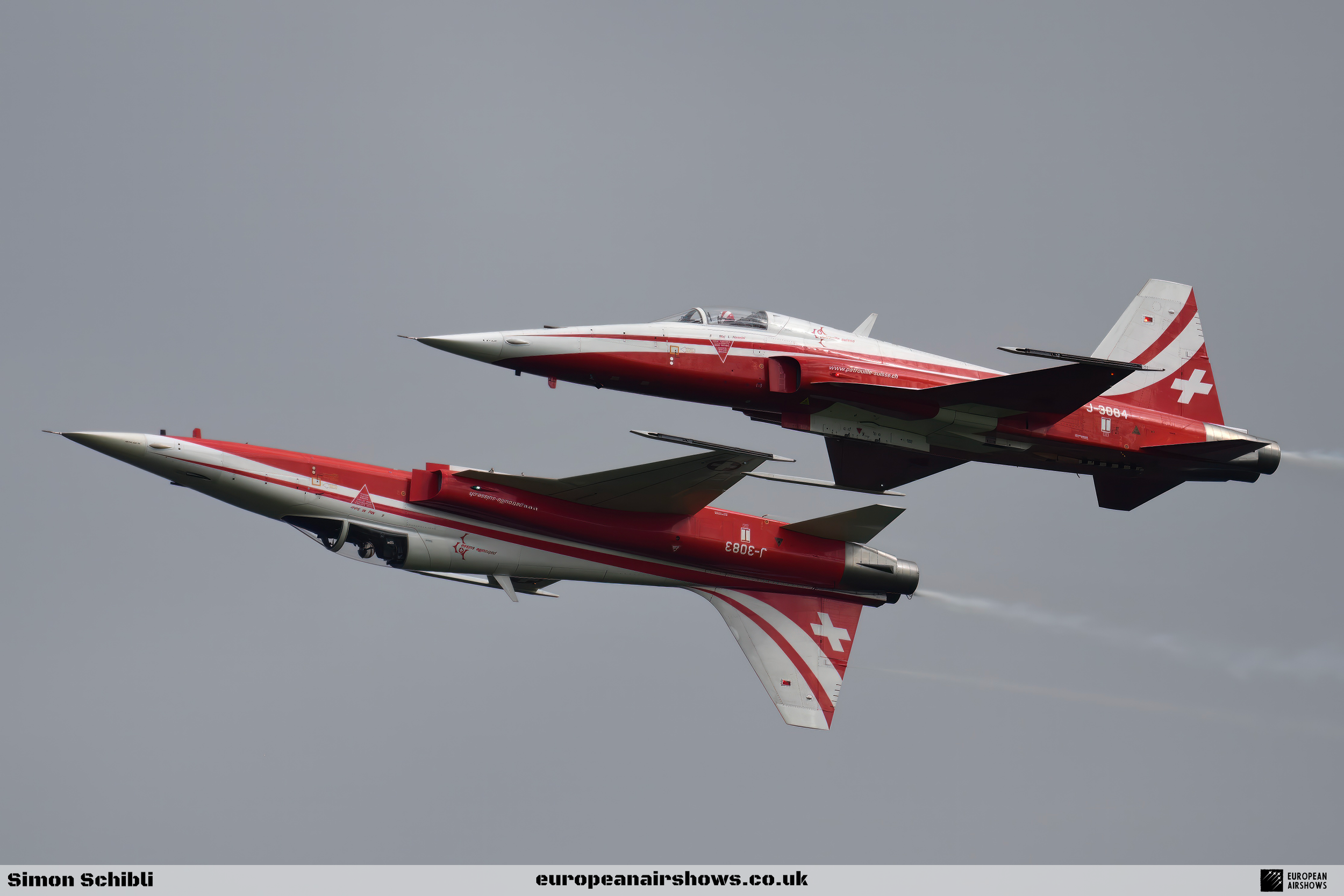
August 11 / F-5E Tiger II first flight
First Flight 11 August 1972
Northrop F-5E Tiger II
The Northrop F-5E Tiger II has a rich and storied history that spans several decades, reflecting its significant impact on the world of military aviation. The F-5E is a part of the F-5 family of supersonic light fighter aircraft, originally designed and built by Northrop Corporation in the United States. Its development is a testament to Northrop’s vision of creating a cost-effective, versatile, and reliable fighter jet that could meet the needs of various air forces around the world, especially those of allied nations during the Cold War era.
The origins of the F-5 series can be traced back to the mid-1950s when Northrop began developing a lightweight fighter concept under the internal designation N-156. The goal was to produce an aircraft that was simple to maintain, inexpensive to operate, and capable of performing both air-to-air and air-to-ground missions. This concept eventually led to the creation of the T-38 Talon, a supersonic jet trainer, which first flew in 1959. The success of the T-38 provided the foundation for the development of a combat variant, the F-5A Freedom Fighter, which made its maiden flight in 1963.
The F-5A quickly gained popularity due to its affordability, ease of maintenance, and impressive performance. Its success prompted Northrop to develop an improved version, the F-5E Tiger II. The F-5E was designed to address the evolving needs of the 1970s and 1980s, incorporating more advanced technology and enhanced capabilities. The first F-5E prototype took to the skies on August 11, 1972, and the aircraft entered service shortly thereafter.
One of the key improvements in the F-5E Tiger II was its more powerful engines. The aircraft was equipped with two General Electric J85-GE-21 after-burning turbojet engines, which provided greater thrust and improved overall performance. This allowed the F-5E to achieve higher speeds and better manoeuvrability compared to its predecessor. Additionally, the F-5E featured a more advanced avionics suite, including a radar system that significantly enhanced its air-to-air combat capabilities.
The F-5E Tiger II was designed with a focus on versatility. It could carry a wide variety of ordnance, including air-to-air missiles, air-to-ground rockets, bombs, and a 20mm M39A2 cannon. This made it suitable for a range of missions, from air superiority and interception to ground attack and close air support. Its relatively small size and lightweight design also made it highly agile, which was a crucial advantage in dogfighting scenarios.
Throughout its service life, the F-5E Tiger II was adopted by numerous air forces around the world. It became a mainstay in the inventories of many U.S. allies, particularly those in Asia, the Middle East, and Latin America. Countries such as South Korea, Taiwan, Iran, Saudi Arabia, and Brazil, among others, operated the F-5E, benefiting from its cost-effective performance and reliability.
The F-5E also played a significant role in the United States Air Force’s (USAF) training programs. It was used extensively in the Aggressor Squadrons, where it served as a dissimilar air combat training (DACT) aircraft. In this role, the F-5E simulated enemy fighters, providing USAF pilots with valuable experience in dogfighting against aircraft with different performance characteristics. This training was instrumental in preparing pilots for potential combat scenarios against adversaries flying Soviet-designed aircraft.
Over the years, the F-5E Tiger II underwent several upgrades to keep it relevant in an ever-changing technological landscape. These upgrades included improvements to its avionics, radar, and weapons systems. Some variants were equipped with more advanced radar systems, such as the AN/APG-67, which enhanced their targeting capabilities. Additionally, newer weapons and countermeasures were integrated to ensure the F-5E remained effective in modern combat environments.
Despite being overshadowed by more advanced and expensive fighter jets, the F-5E Tiger II has proven its enduring value. Its simplicity, reliability, and cost-effectiveness have ensured its continued use in various roles, including as a frontline fighter, a training aircraft, and an aggressor aircraft. Even as newer generations of fighters have emerged, the F-5E remains in service with several air forces, a testament to its timeless design and adaptability.
In conclusion, the Northrop F-5E Tiger II is a remarkable aircraft with a legacy that spans over five decades. Its development was driven by the need for a versatile, affordable, and reliable fighter jet, and it has more than fulfilled that role. The F-5E’s contributions to international military aviation, its widespread adoption, and its continued service highlight its significance in the history of fighter aircraft.
F-5E Facts
Swiss Precision: Switzerland was one of the prominent operators of the F-5E Tiger II. The Swiss Air Force not only used the aircraft extensively but also produced them under license. Swiss-built F-5Es were known for their high build quality and precision, reflecting the country’s reputation for engineering excellence.
MiG-28 in Hollywood: The F-5E gained some fame in popular culture when it was used to portray the fictional “MiG-28” in the 1986 blockbuster film “Top Gun.” Painted in black with red stars, the F-5Es served as the enemy aircraft in the movie’s iconic dogfighting scenes.
Aggressor Squadrons: The F-5E played a crucial role in the U.S. Navy and Air Force’s aggressor squadrons, where it simulated Soviet and other potential adversaries’ aircraft. Its agility and performance made it an ideal platform for this role, providing realistic training for American fighter pilots.
Vietnam War Service: While the F-5E itself did not see combat in the Vietnam War, its predecessor, the F-5A, was deployed to Vietnam under the “Skoshi Tiger” program. The F-5A’s performance in combat provided valuable insights that influenced the development of the F-5E.
Versatile Airframe: The F-5E’s airframe was highly adaptable, leading to the development of several specialized variants. These included reconnaissance versions like the RF-5E Tigereye, which was equipped with advanced cameras and sensors for tactical reconnaissance missions.
Affordable Excellence: One of the key selling points of the F-5E was its cost-effectiveness. The aircraft was significantly cheaper to purchase and operate compared to other contemporary fighters like the F-4 Phantom II and the F-15 Eagle, making it an attractive option for many countries with limited defence budgets.
Civilian Operators: Beyond military use, the F-5E has found a niche among civilian operators, particularly in the United States. Private companies and organizations have acquired surplus F-5Es for use in adversary training, airshows, and research and development.
Iranian Innovation: Iran, one of the early operators of the F-5E, has developed several indigenous variants and upgrades of the aircraft. Notable among these is the HESA Saeqeh, a twin-tailed version of the F-5E, showcasing Iran’s ability to modify and enhance the platform despite international sanctions.
NASA Research: NASA utilized the F-5E in various research programs. One notable project was the Shaped Sonic Boom Demonstration, where modified F-5Es were used to study techniques for reducing the noise produced by sonic booms, contributing to the development of quieter supersonic aircraft.
Extended Service Life: Despite being designed in the 1970s, many F-5Es continue to serve well into the 21st century. Through various modernization programs, including upgrades to avionics, radar, and weapons systems, the F-5E remains a viable and effective platform for numerous air forces worldwide.

















